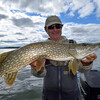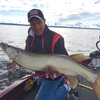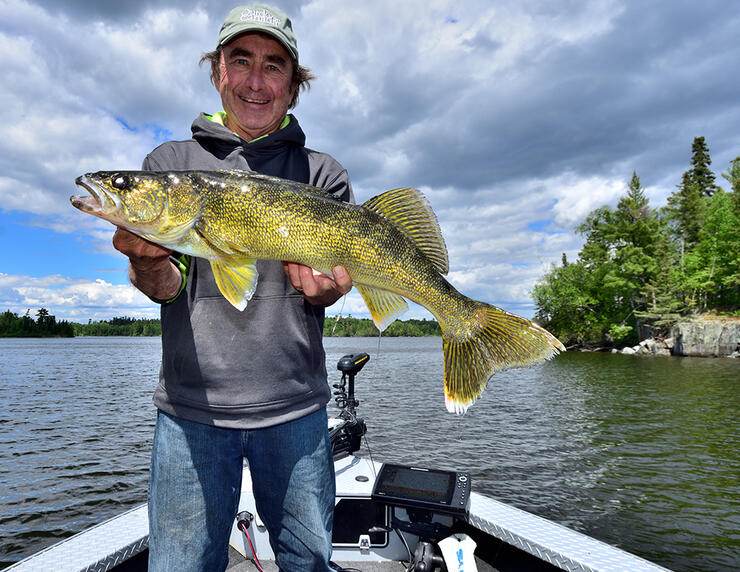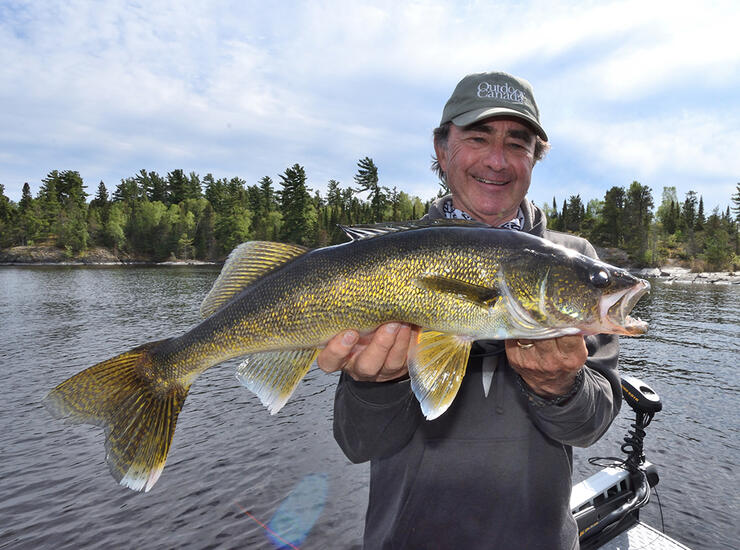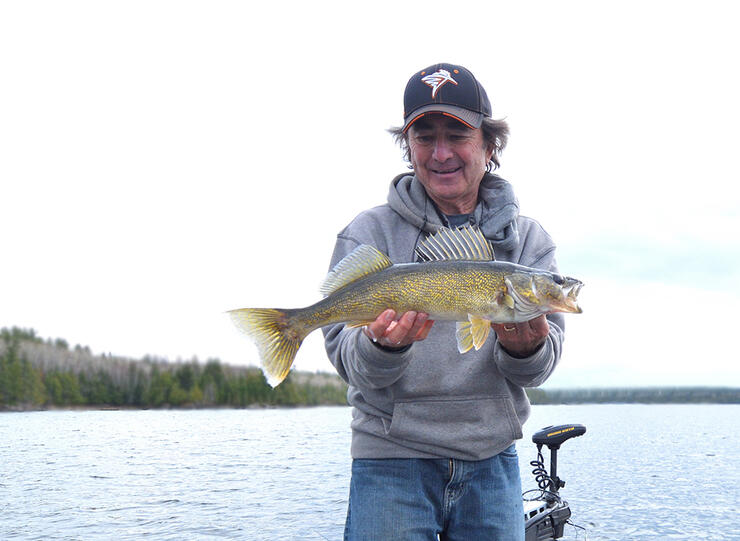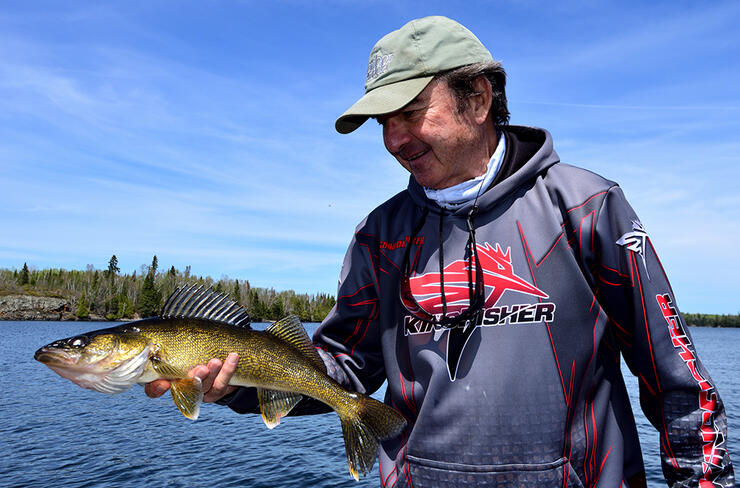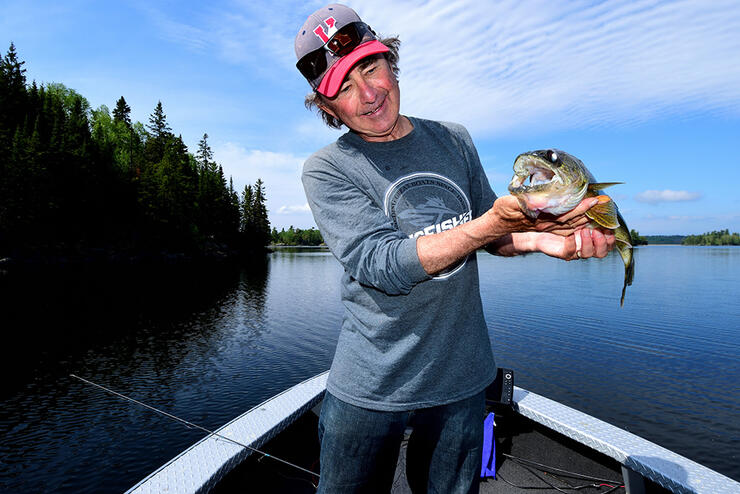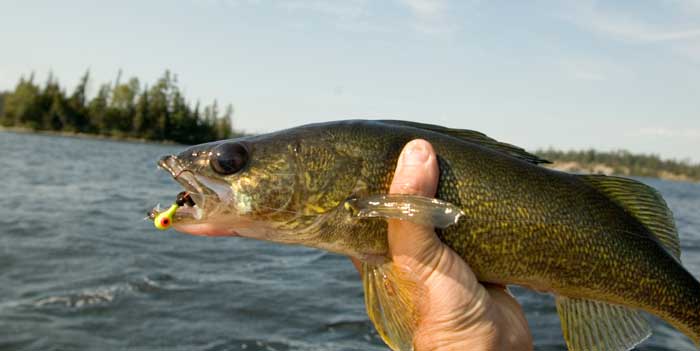
Knock On Wood Walleye

I’ve been exploiting a spring walleye pattern for the past couple of seasons that is as good as gold and maybe the most unique you will ever find in Northern Ontario. It is fishing in the myriad bays and coves on large lakes like Rainy Lake, Lake of the Woods, Eagle Lake and the hundreds of others spread across the north country once home to a thriving timber industry.
For the better part of a hundred years, the surrounding forests were harvested and the logs were deposited into local lakes both big and small. In the spring, the sluiceways next to the dams — ever wonder why so many lakes in Northern Ontario have dams — were opened up and the logs ingeniously flushed from the highest lake down to the lowest, like descending a set of stairs. The untold number of logs were then stored in the bays and coves around the lake before being towed by tug boats into towns and cities like Fort Frances, Kenora and Dryden where the sawmills converted the red and white pine into lumber and the black spruce and jack pine into pulp and paper.
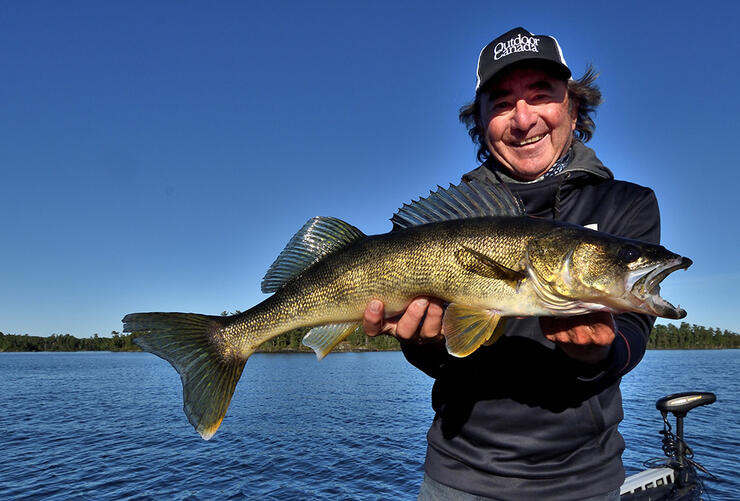
Like many, I can still remember in the late 1970s and early 1980s maneuvering around the powerful boats as they towed the massive log booms up Lake of the Woods into town. And when I go back now to the bays and coves where the logs were stored, I find a new form of gold with a white patch on the tip of its tail.
It appears that so many logs were stockpiled on top of one another, that the sheer weight and volume of wood wedged many of the logs permanently into the mud. Others simply became waterlogged over time and sank to a watery grave. Now, the walleye are using the submerged deadheads as cover in the spring to ambush prey.
Finding the best bays is as simple as slowly cruising around your favourite lake — don’t forget about those small and medium-size “uphill” lakes with small concrete dams on them — with your Chartplotter set on a side scan. On clear water lakes, you can simply scan the bottom of the bays with your eyes and see if they’re littered with logs and fish.
Once I find an ideal-looking candidate, I like to set my sonar unit up front to 360 MEGA scans. That way, with the Talon down and holding the boat perfectly still, I can easily see where the submerged logs are positioned and cast to them. The other day, I even watched walleyes swimming amongst the logs.
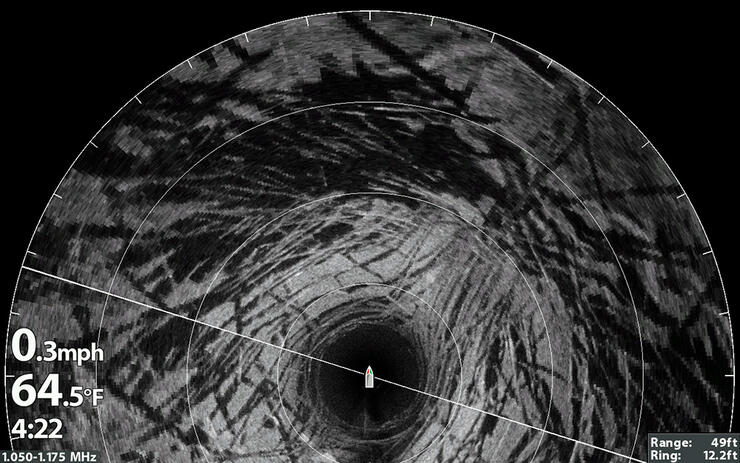
You might be surprised to learn, too, that fishing the shallow log-littered indentations isn’t nearly as difficult as you might imagine. Even though the bottom is covered with wood, the logs are not overly snaggy being covered with a slippery coating of algae, slime and gunk. So a variety of casting presentations are perfectly suited.
The other day when I was out, I found the fish to be super aggressive and in a chasing mood. So I dug out my jerk bait rods and alternated between a Nishine Erie 95 SD and a 3 1/8-inch Rapala X-Rap, both in yellow perch hues. Jerkbaits are ideally suited to wood walleye because after you rip them down four to six feet, depending on the model, you can pause and suspend your lure two-thirds of the way down in the water column, just above the wood and walleyes cluttering up the bottom. Then, when you go to make your next pop, you feel a fish rush up and try to snatch the rod out of your hand.
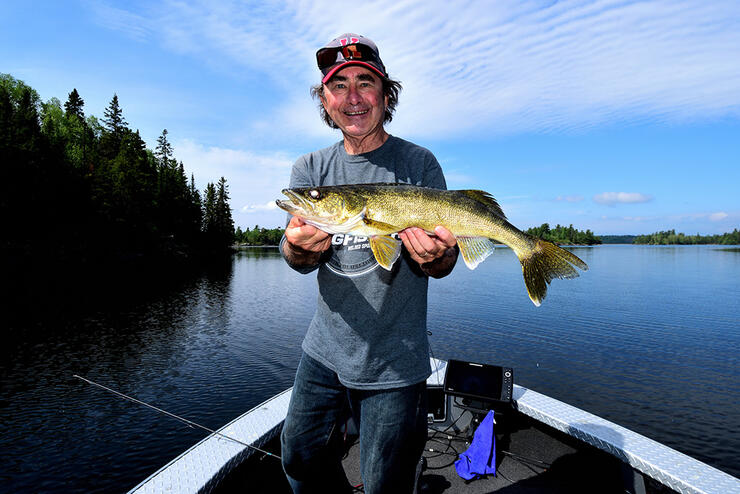
‘Gotta confess, too, that I haven’t tried using circuit bill-lipped crankbaits yet, but it is on the wood walleye agenda. To be honest, I have a hunch that they are going to work every bit as well, and maybe even better than jerk baits. I am especially looking forward to throwing one of the Nishine Bladed cranks with the blade attached to the front hook. Adding on a VMC-bladed treble hook is also high on the agenda, as I am certain the added flash and flicker in the shallow water will turn walleye like crazy. That is the plan anyway, and I am knocking on wood for good luck.
Where to Walleye fish in NortHWEST Ontario
Recommended Articles

20 Years With Fish TV!

Cast Into the Heart of a Walleye Paradise

3 Great Ontario Walleye Destinations

Eating Northern Pike

Brook Trout Fishing at Dunlop Lake Lodge

10 Facts About Lake of the Woods
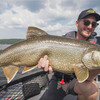
Trophy Lake Trout on Lake Obabika
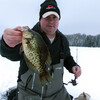
Epic Ice in Northwestern Ontario
Ontario Brook Trout

Top 5 Baits for Smallmouth and Largemouth Bass
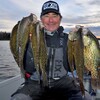
Bivins’ Bounce Crappies

Long Nose Gar
The Best Of Times in Northern Ontario

Yellow Perch Egg-Stacy

Best WhiteFish Tactics

A Whole Lota Lovin'
Top 5 Musky Destinations in Ontario
Top 8 Places to Ice Fish in Ontario
Don’t Be Afraid Of Muskies
